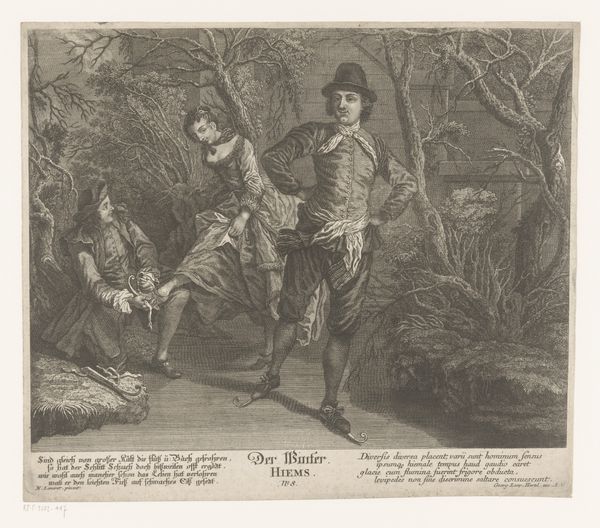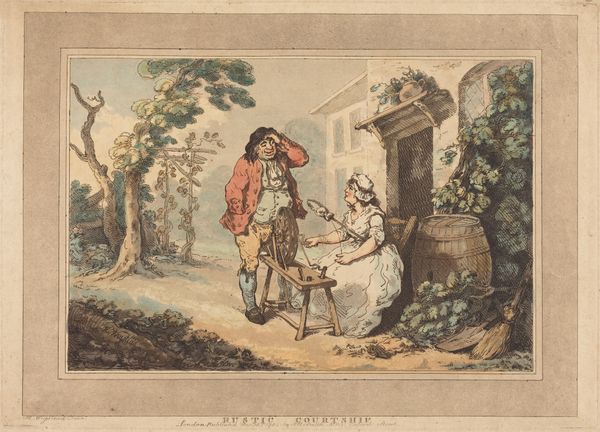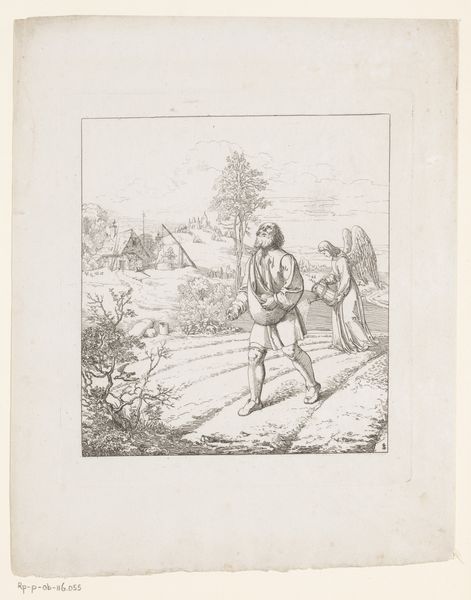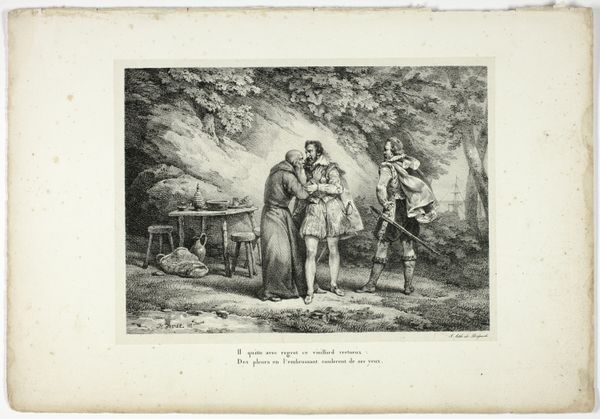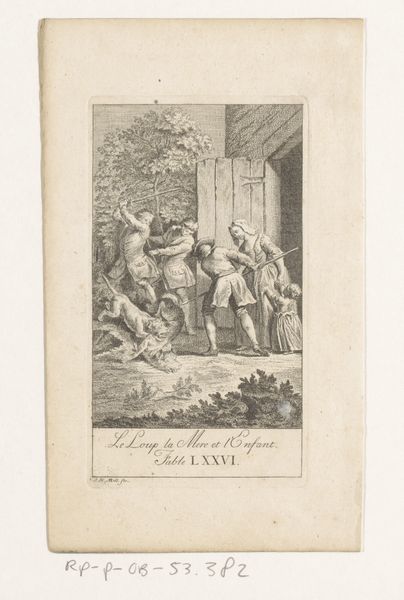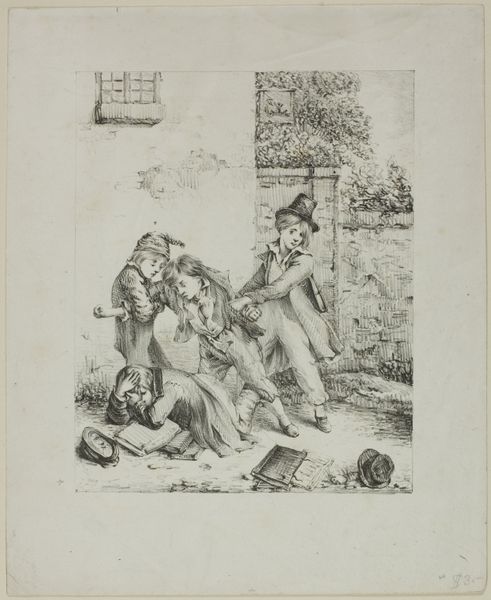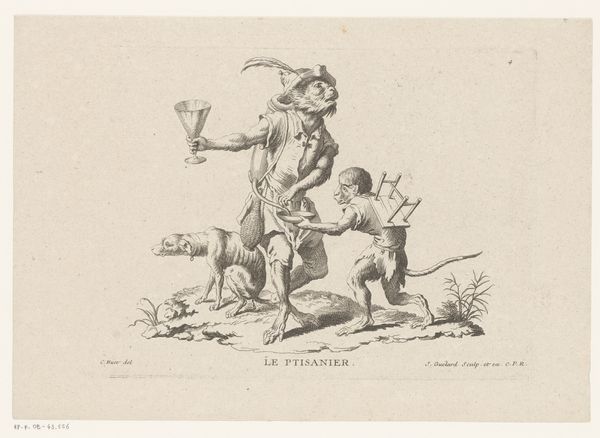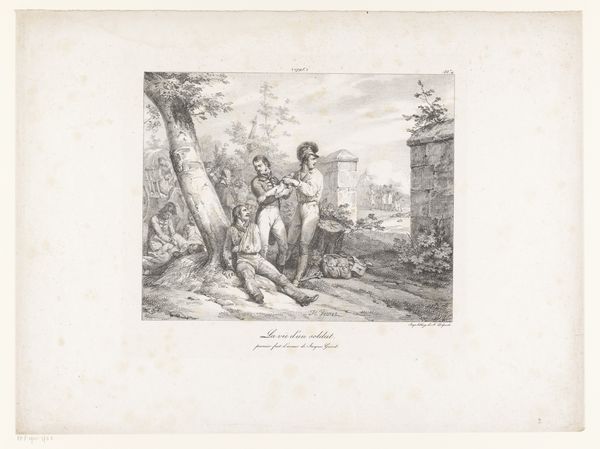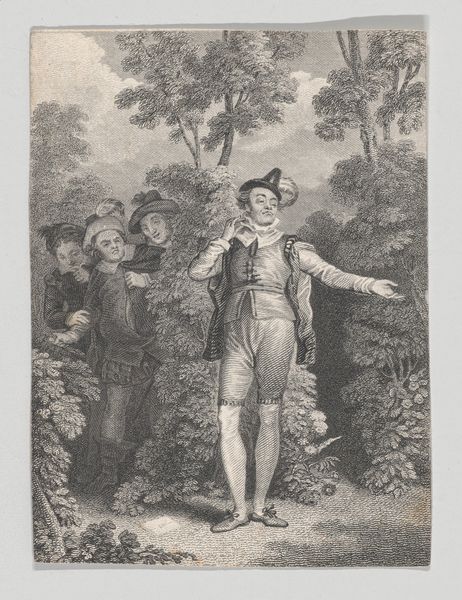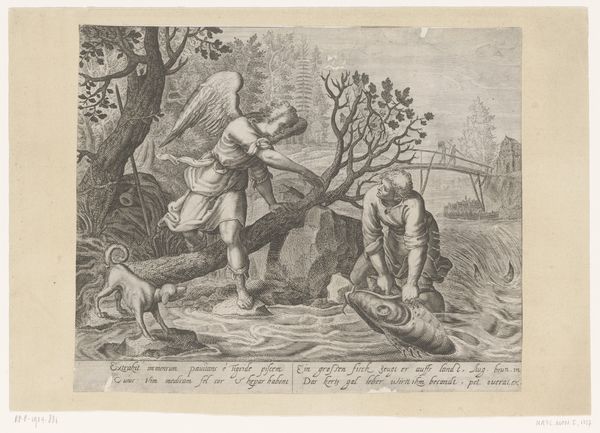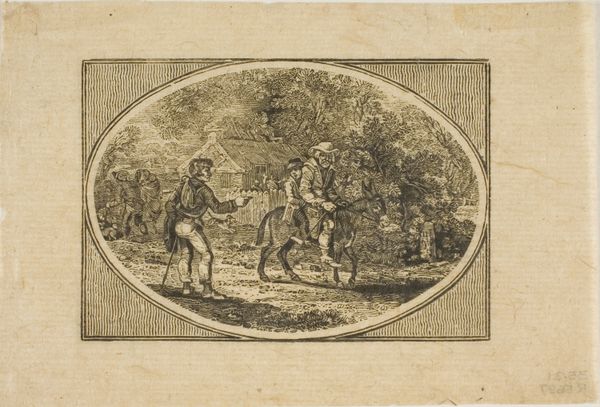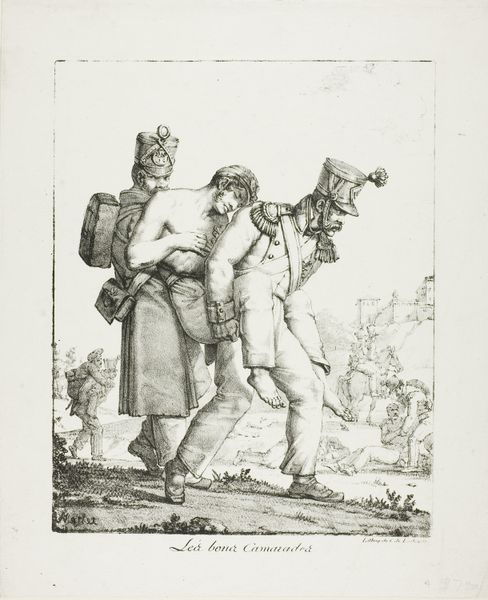
drawing, lithograph, print, paper
#
drawing
#
lithograph
# print
#
landscape
#
paper
#
romanticism
#
france
#
genre-painting
#
history-painting
Dimensions: 135 × 182 mm (image); 177 × 224 mm (sheet)
Copyright: Public Domain
Editor: This is "Arrest of a Poacher," a lithograph by Horace Vernet, created sometime between 1813 and 1839. It strikes me as quite a stark depiction of power dynamics. What do you see in this piece? Curator: The means of production immediately grab my attention. Lithography, as a printmaking process, allowed for relatively easy reproduction. Consider the context: France, recovering from revolution, and entering the industrial age. Who could afford prints, and what stories did those prints tell? This isn't just an image; it’s a commodity. Editor: So, you're saying the medium itself influenced its message? Curator: Absolutely! Lithography facilitated wider dissemination. Vernet captured a scene: an agent of the state confronting a peasant. What does the ready availability of this image communicate about social structures? Was it meant as a warning? An assertion of control? And for whom? Editor: That's interesting. It makes me think about who is able to exert their agency versus being subject to somebody else's power, like the soldier versus the peasant here. Curator: Precisely. Examine the soldier's uniform versus the poacher’s clothes – these are indicators of status, and access to material wealth which defines that status. The print's materiality reflects and reinforces these societal stratifications. Think about the labor involved in creating both the image, and the society it depicts! How are labor practices enshrined in this image? Editor: I hadn't thought about it in terms of the actual process of making it reflecting class dynamics like that. Curator: Exactly! Looking closely at materials and modes of production opens up layers of social and political meaning. What we're really considering here, is not a representation but an outcome, that's embedded within a matrix of labour. Editor: Thanks, I’ll never look at a print the same way again!
Comments
No comments
Be the first to comment and join the conversation on the ultimate creative platform.

